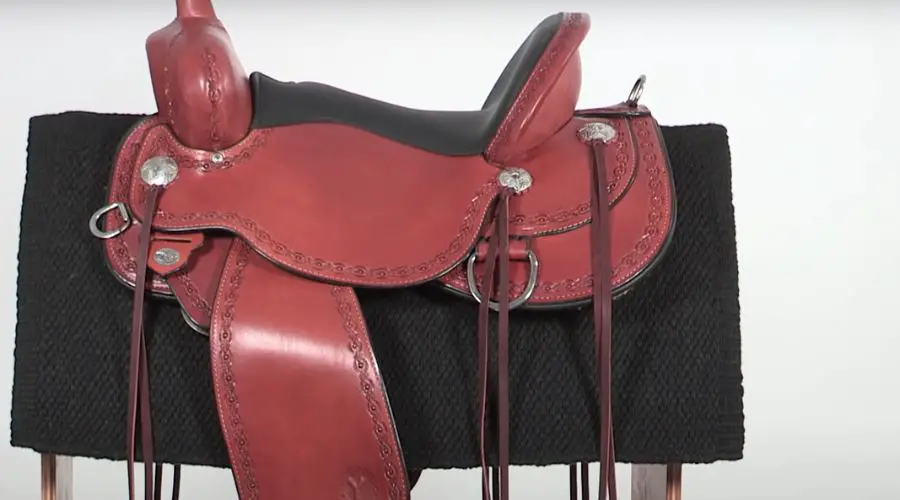Many horses would have cracked hooves at some point in their lives. The majority of cracks would heal on their own and pose no serious harm to the animal. However, untreated cracks might worsen, resulting in a permanently imbalanced foot and eventually lameness.
A horse’s sole could crack due to a lot of factors. Nutrition, exercise, surroundings, and genes all have a huge impact. Once developed, the cracks could take several months to recover and, in extreme circumstances, may result in persistent issues.
Identifying your horse’s cracked hooves early and seeking appropriate and timely care may assist in drastically minimizing the time and treatments required to allow a crack to recover.
Cracks can be prevented and treated in many ways. Let’s dig in more about how you can ride a horse with cracked hooves and keep them healthy.
Can you ride a horse with a cracked hoof?
Yes and no. It depends on how bad its hoof condition is. Although most cracked soles in horses are minor and may not cause significant harm;, hoof cracks could become a permanent and dangerous condition in other horses.
Hoof cracks may pose a significant threat to horses engaged in equine-related games like racing and polo and those with heavier weights than the animals that do not engage in such practices.
For instance, even though a crack is small, it could become deeper very fast in an animal subjected to the harsh terrain of a racecourse and carrying extreme weight for long durations.
If a sole crack turns serious, it may not just become uncomfortable and have a bad effect on your horse’s abilities, but it may also result in an abscess that might be dangerous.
Racehorses appear to have the most susceptibility to developing hoof cracks among other horses, which again is probably due to the rate with which they require boots/horseshoes and the abrasive ground of the racetrack toward which their feet are exposed.
In the same way, heel cracks are more common in cold weather than in the spring and summer. Hoof cracks require more time to heal in the cold as horse feet develop more slowly during this season.
If he competes in races, works hard, or stays all day outdoors during the wintertime, his soles may split even more and will need immediate medical attention.
Keeping this in mind, regardless of how small a foot crack seems, it is imperative to take good care and get your horse checked by a vet as soon as possible. The horse shouldn’t take part in competitive games until the problem is fully addressed.
![Can You Ride Horse With Cracked Hooves? [Read 5 TIPS First] Divider-saddle](https://mammalpedia.com/wp-content/uploads/2022/09/Divider-saddle.webp)
Do chipped hooves hurt horses?
The majority of heel cracks are minor and not hurtful; however, they could get severe and result in inflammation or complete hoof loss.
Micro-organisms could infiltrate the cracks in the hoof membrane to enter the internal layers, resulting in hefty farrier and veterinarian expenses as well as discomfort for the animal.
The gaps should not be sealed with any fabric or solution until they have been thoroughly cleaned and treated.
Covering an affected crack can simply exacerbate the situation, allowing germs to spread and cause inflammation. At last, the hoof would need to be fixed surgically.
![Can You Ride Horse With Cracked Hooves? [Read 5 TIPS First] hooves horses](https://mammalpedia.com/wp-content/uploads/2022/08/horse-hoove.webp)
When should I be worried about a hoof crack?
Any hole in the hoof membrane should be taken seriously. However, the necessary treatment relies on the severity of the hoof crack. Below are the types of hoof cracks that require special attention varying from minor to severe.
1. Tiny, straight cracks that begin at surface level and rise a little more than an inch. These are usually addressed during the next farrier appointment and do not necessitate any additional care.
2. Horizontal splits that are an inch broad or smaller start from the coronary band and go downhill with the heel. Cracks such as these are usually caused by small healed damage to the coronary region that affects hoof development.
The crack moves downhill while the hoof expands, finally growing out completely. There’s a good chance that this procedure won’t require any assistance.
3. Straight cracks somewhere at the root of the heel that extends all over the foot sole. To examine this, you’ll have to hold the hoof and give it a light cleaning. A bigger problem could arise if the break seems to affect other tissues except for the hoof membrane.
Make sure your veterinary doctor and farrier are aware of this and pay attention to any indications that the condition could be more serious than a simple deformity.
4. Deep, recurrent parallel cracks. A persistently imbalanced hoof might show signs of splits that spread more than one inch across the foot and do not appear to heal and disappear.
Even when the crack is small and controllable, discuss with your veterinarian to understand the origin and whether a different technique to clipping and shoeing is required.
5. Gaps that bleed get bigger with every trip or are connected to lameness. Any breach that exhibits any of the above signs should be reported right away to your doctor and farrier.
The majority of issues could usually be solved by those two experts working together. The more time it takes, the more harm would be caused.
![Can You Ride Horse With Cracked Hooves? [Read 5 TIPS First] Divider-horse](https://mammalpedia.com/wp-content/uploads/2022/09/Divider-horse.webp)
5 Tips when you ride with cracked hooves
Here are some tips that you could employ when riding your horse with cracked hooves:
1. Examine your horse’s feet daily
Even though it might seem apparent, this is probably the most effective step you could perform to maintain hooves strong. Most riders believe that inspecting a horse’s feet is the duty of their farrier. However, this is where they make a huge mistake.
Examine your horse’s toes after a ride for any rocks or other tiny things that could get trapped in the hoof. Spend a few minutes to get rid of any gravel and compacted debris that could have remained stuck while cleaning your horse’s hooves.
Gather the necessary instruments, including a decent hoof picker and a hard brush. By inspecting your horse’s hooves, you’ll be able to detect splits, abscesses, as well as other potential health issues that might need attention.
Additionally, routinely twisting the shoe would let you know if it is loose and has to be replaced. To prevent any serious problems, it’s important to treat horse feet problems as soon as possible.
2. Schedule periodic farrier appointments
Periodic farrier appointments are necessary to make sure that your horse’s hooves are perfectly clipped and balanced. When a hoof sidewall becomes too lengthy, it stretches and breaks.
Frequent farrier visits are necessary to maintain your horse’s condition, especially if they remain barefoot. A farrier possesses a better ability to spot any issues that you may overlook, like minor holes and abscesses.
Since 6-8 weeks is a standard period, you should talk to your farrier about the visiting sessions regarding your horse’s hooves. (Learn about the best hoof hardener for barefoot).
3. Avoid leaving your horse in the wet, muddy area
The likelihood of getting cracked feet or fungus increases if your horse is constantly standing in soggy, muddy circumstances all the time.
Muddy terrain usually causes the grip of the foot to lose or wiggle away shoes. Thick layers of mud could make it more difficult to detect splits and other issues within the foot and make them challenging to grab.
4. Introduce supplements to their diet
A healthy diet is essential for optimal hoof development. There may be a need for a supplement in certain horse breeds since they are more inherently prone to shattered hooves. Supplements for horse hooves usually include biotin, iron, zinc, as well as other essential nutrients.
A high-quality horse foot supplement could also aid with other health-related issues in horses, like the quality of their coat. Never introduce a different supplement to your horse without first seeking guidance from a veterinarian or horse dietitian.
Research shows these nutritional elements when introduced to your horse’s diet improve their hoof health:
- Biotin (20 mg every day)
- Iodine (1 mg every day)
- Methionine (2500 mg every day)
- Zinc (175 to 250 mg every day)
5. Avoid the wet/dry cycle
Whenever a horse’s foot becomes wet, it gets soft and eventually expands. The foot stiffens and shrinks once it becomes dry. It is equivalent to how wood expands and shrinks during wet and drier weather.
Your horse’s shoes may become loose and develop cracks as a result of repeated stretching and compressing. Maintain a track of the climate and make an effort to limit foot exposure to a constantly changing damp and dry phase to prevent this.
It is particularly essential if the horse’s feet are already damaged.
![Can You Ride Horse With Cracked Hooves? [Read 5 TIPS First] Divider-horse](https://mammalpedia.com/wp-content/uploads/2022/09/Divider-horse.webp)
Conclusion
In the end, maintaining a horse’s physical health reduces the possibility of damaged hooves. If you want to keep your horse’s feet healthy, you must make sure it maintains healthy body weight, shoes are checked regularly, and consume a well-balanced diet.
Consider wearing shoes or proper boots if your horse needs to go through difficult terrain like rocks, ice, hills, or hard grounds. Most horses would “shape up” over time if progressively exposed to certain environments. Others could forever be vulnerable and require additional protection.
It’s necessary to remember that fixing cracks could be a time-consuming procedure since hooves develop quite slowly.



